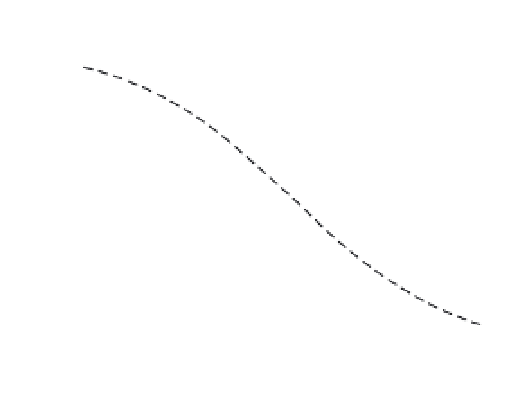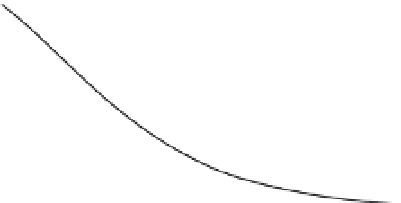Environmental Engineering Reference
In-Depth Information
owing to its low cost, the low impact of field opera-
tions and improved possibilities for treating remote
areas through aerial seeding. However, high preda-
tion risk represents a serious managerial constraint for
the direct use of seeding (Hadri & Tschinkel 1975,
Bergstern 1985). Uncertain seed germination and
seedling establishment under dry conditions are also
important considerations.
P.
Q. ilex
Q. coccifera
100
80
60
40
Seedling quality
20
The best procedures for characterizing seedling quality
are still under discussion (Mattsson 1997). Following
the concept of quality for purpose, in the context of
the restoration of the Mediterranean ecosystem,
seedlings should be able to withstand unfavourable
growing conditions (transplant shock, summer stress,
cycles of drought), and still take advantage of fav-
ourable climatic periods to achieve sustained growth.
Prior to the advent and general dissemination of mod-
ern nursery practices, woody seedlings were commonly
overstressed and frequently showed abnormal growth
(e.g. root spiralling) that strongly compromised their
survival and field performance. This was a consequence
of technical limitations and of the prevalent idea that
seedlings hardened in this way were acclimatized to
adverse field conditions. Results did not contradict these
ideas in the short term, probably because of the resist-
ance and narrow range of species used, as well as care-
ful tending. However, with the use of a wider array
of plant species and the occurrence of extremely
dry years it has become increasingly evident that
seedling quality must be ameliorated to increase
restoration success.
Performance of high-quality seedlings, in terms
of size, nutritional status, morphology, etc., is now
commonly much improved (Seva
et al.
2000, Villar
et al.
2000). Most of these studies are based on nursery
manipulations simultaneously affecting several plant
morpho-functional traits. This is of practical use, but
hampers a thorough understanding of the traits that
are responsible for plant performance in the field.
Seedling size together with other, mostly visually
assessed characteristics, are used to define acceptable
stocks. However, above-ground size may not be a
good indicator of seedling quality under semi-arid
conditions (Seva
et al.
2000). Root-system structure
0
30
60
90
120
150
Length of the dry period (days)
Fig. 14.5
Proportion of plants surviving in relation
to the length of the dry period during the first post-
plantation year, for three species (
Pinus halepensis
,
Quercus ilex
ssp.
ballota
and
Quercus coccifera
) planted
in eastern Spain. Lines are significant logistic fits
(
P. hakpensis
< 0.0001). Dry period refers to the
maximum number of consecutive days with
precipitation less than 5 mm. Elaborated from Alloza
and Vallejo (1999).
Table 14.2
Mediterranean restoration techniques
concerned with water.
Objective
Technique
Increase water-use
Selection of drought-tolerant
species and ecotypes
efficiency
Seedling preconditioning
Improve below-ground
performance
Improve nutritional status
Increase water supply
Soil preparation and
amendment
Irrigation
Microsite selection
Reduce water losses
Tree shelters
Mulching
Microsite selection
Control of competing species





















































